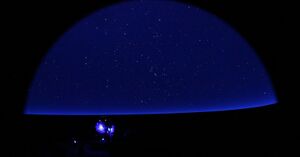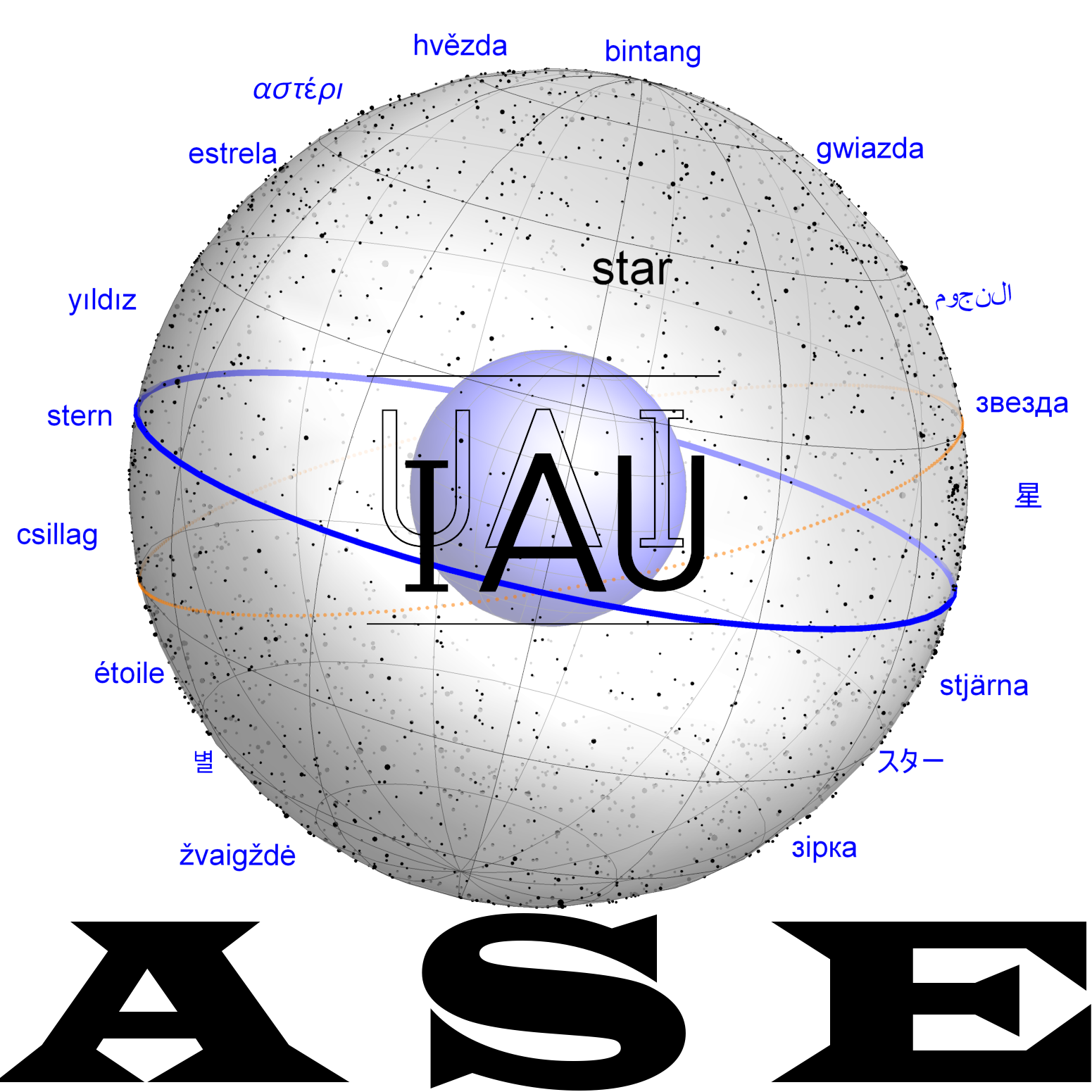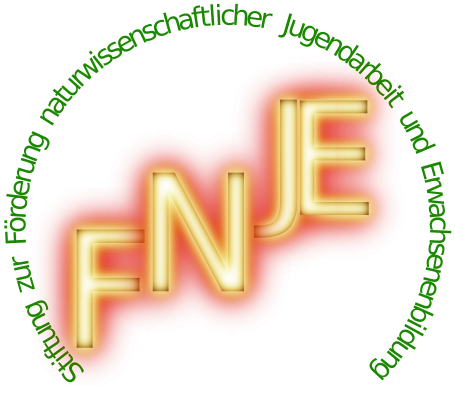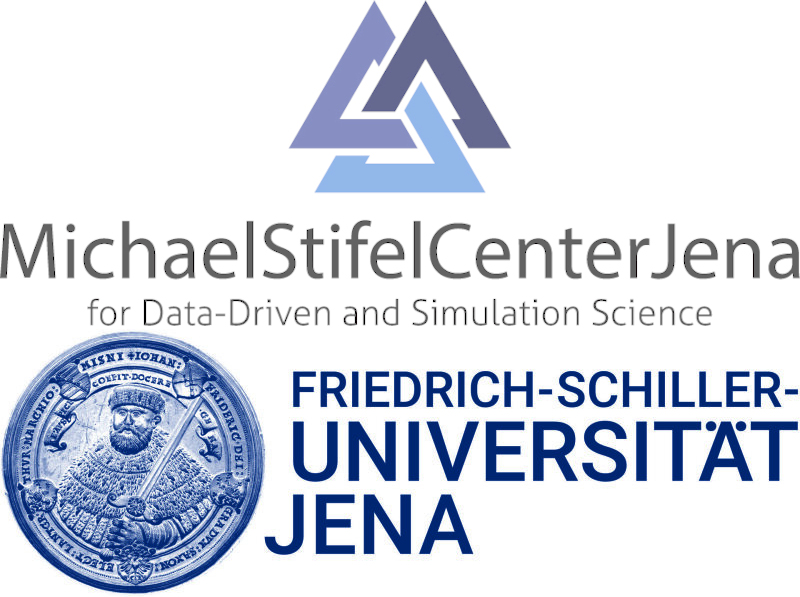E2.TUR3: Difference between revisions
No edit summary |
|||
| (12 intermediate revisions by 2 users not shown) | |||
| Line 1: | Line 1: | ||
{{DISPLAYTITLE:E<sub>2</sub>.TUR<sub>3</sub>}} |
{{DISPLAYTITLE:E<sub>2</sub>.TUR<sub>3</sub>}} |
||
[[File:ZeissHeaven1905 2017 s.JPG|thumb|the entire sky - Zeiss Planetarium Berlin (SMH 2017).]] |
|||
<sup>mul</sup>E<sub>2</sub>.TUR<sub>3</sub> (𒀯𒂍𒉣𒇬) is a Babylonian name meaning "Enclosure" and designates a star or constellation in [[Leo]]. Other ideas may have been held by other ancient scholars as well: The exact sense of the various renderings of the terms with e<sub>2</sub>.tur.ra range from identifications with 'The Lion' constellation to the closest sense of what might be a full-sky constellation in cuneiform. EAE (2) equates <sup>mul</sup>E<sub>2</sub>.TUR<sub>3</sub>.RA with the entire sky, based on a view of the stars as cattle in their enclosure: this enclosure being the entire sky, wild cattle being the planets, and domesticated cattle being the fixed-stars (Horowitz 2010,<ref>Horowitz W. 2010: “Stars, Cows, Semicircles and Domes: Astronomical Creation Myths and the Mathematical Universe,” in W. Horowitz, U. Gabbay, and F. Vukosavoviæ, eds., A Woman of Valor: Jerusalem Ancient Near Eastern Studies in Honor of Joan Goodnik W estenholz: 263-285.</ref> Rochberg 2010<ref>Francesca Rochberg (2010). S'''HEEP AND CATTLE, COWS AND CALVES: THE SUMERO-AKKADIAN ASTRAL GODS AS LIVESTOCK''' In: Opening the Tablet Box, Brill, 347–359 |
|||
https://brill.com/display/book/edcoll/9789004186569/B9789004186569-s022.xml</ref>). |
|||
''Babylonian name of a star or constellation. -not sure etur and turrame are the same thing. Unless ME here is plural - so mulE.TUR.RAme'' |
|||
==Concordance, Etymology, History<ref>[[Mesopotamian (All Terms)|Planetarium Babylonicum 2.0]], All Skies Encyclopaedia.</ref>== |
|||
| ⚫ | |||
| ⚫ | |||
''E6 = É.TUR - Euin Choung re-translate - Wayne-Susanne need to process - Wayne need to check Cavigneaux 1979 and the reference in G|SL'' |
|||
==Dictionary== |
|||
| ⚫ | |||
| ⚫ | |||
* <sup>mul</sup>E<sub>2</sub>.TUR<sub>3</sub>.RA, |
* <sup>mul</sup>E<sub>2</sub>.TUR<sub>3</sub>.RA, |
||
* <sup>mul</sup>E.TU.RA.ME, |
* <sup>mul</sup>E.TU.RA.ME, |
||
* <sup>mul</sup>E.TU.RA.AM.MA/MI; |
* <sup>mul</sup>E.TU.RA.AM.MA/MI; |
||
* = <sup>mul</sup>''eturammi'' 'Eturammi star' [BPO 2<ref name=":0">''Reiner E., Pingree D''. Enuma Anu Enlil, Tablets 50-51. Undena Publications, Malibu, 1981 (Babylonian Planetary Omens: Part Two).</ref>, 11; Gössmann<ref name=":1">''Gössmann P.F''. Planetarium Babylonicum, Rom, 1950 (A. Deimel. Šumerisches Lexikon 4/2).</ref> 130, 131]. |
|||
The surviving Sumerian also allows for readings with the genetive MUL ''e''<sub>2</sub>-''tu-ra'', the Star(s) of the Enclosure, and plural MUL ''e''<sub>2</sub>-''tu-ra''-ME 'the stars of the enclosure'. |
|||
===Kurtik with Hilder, Hoffmann, Horowitz, Kim=== |
|||
{| class="wikitable" |
{| class="wikitable" |
||
|- |
|- |
||
!Sources!!Identifications |
!Sources!!Identifications |
||
|- |
|- |
||
|Lexical texts |
|'''Lexical texts''' |
||
Urra XXII series: |
Urra XXII series: |
||
* [<sup>mul</sup>e-TU-r]a-am-me = sukkal <sup>d</sup>a-nu-ni-tum |
* [<sup>mul</sup>''e''-TU-''r'']''a-am-me'' = sukkal <sup>d</sup>''a-nu-ni-tum'' |
||
** "Enclosure = Messenger of Anunitu", [<sup>mul</sup>e-tu-r]a<sup>?</sup>-am-me = <sup>mul</sup>ur.gu.la "Eturammi? = Lion." |
** "Enclosure = Messenger of Anunitu", [<sup>mul</sup>''e-tu-r'']''a''<sup>?</sup>-''am-me'' = <sup>mul</sup>ur.gu.la "Eturammi? = Lion." |
||
** [Cavigneaux 1979<ref>''Cavigneaux A.'' // Baghdader Mitteilungen. 1979. Bd. X. S. 132-134.</ref>, 134, 17:19-20; Bloch-Horowitz 2015<ref>Bloch Y. and W. Horowitz (2015): “Urra = hubullu XXII: The Standard Recension,” with Y. Bloch, Journal of Cuneiform Studies 67: 71-125.</ref>, 110:313ʹ], see also [ACh Suppl.<ref name=":2">''Ch. Virolleaud'', L'astrologie chaldéenne S(in); Shamasz; Isht(ar); Adad; S/Supp. = Supplément; SS / 2.Supp. = Second Supplément (Paris 1905 - 1912)</ref> 2, 78 i 7]. |
|||
** [Cavigneaux 1979, 134, 17:19-20; Bloch-Horowitz 2015, 110:313ʹ], see also [ACh Suppl. 2, 78 i 7]. |
|||
|These restaurations of the text are not secure. |
|||
|Example |
|||
|- |
|- |
||
|EAE. |
|'''EAE.''' |
||
| ⚫ | |||
| ⚫ | |||
| ⚫ | |||
| ⚫ | ** "The Enclosure (refers to) DIM<sub>2</sub>.MA.AN. NA / that is, to the whole heavens, (because) dim<sub>2</sub> (means) "to[tality," (besides) dim<sub>2</sub> = banû "to create"], (therefore) it is called "for the creatures? of heaven."" [BPO 2<ref name=":0" />, III 22-22a; Koch 1989<ref name=":3" />, 121]. |
||
| ⚫ | * (3) DIŠ <sup>mul</sup>E<sub>2</sub>.TUR<sub>3</sub>.RA.ME SUKKAL <sup>mul</sup>''A-nu-ni-tu''<sub>4</sub> ''ana'' <sup>mul</sup>ŠU.PA TE / ''ina'' MU BI ''ina'' TIL MU LUGAL UŠ<sub>2</sub> BURU<sub>14</sub> ''nap-ša''<sub>2</sub> KUR GU<sub>7</sub> BURU<sub>14</sub> ŠE ''u'' ŠE.GIŠ. I<sub>3</sub> GAL<sub>2</sub> |
||
| ⚫ | |||
|Here we are not sure how to read the text |
|||
* (1) |
|||
| ⚫ | |||
| ⚫ | |||
* (2) can be read as genetive or plural, leading to the interpretation of an all sky-constellation |
|||
| ⚫ | |||
| ⚫ | |||
| ⚫ | |||
| ⚫ | |||
|Example |
|||
|- |
|- |
||
|"The Great Star List and Miscellenia." |
|'''"The Great Star List and Miscellenia."''' |
||
* <sup>mul</sup>''e-tu''<sup>!</sup>-''ram-mi'' = <sup>mul</sup>min(=ur.gu.la) |
|||
* |
* "Eturammi = Lion." [Mesop.Astrol.<ref name=":4">''Koch-Westenholz U''. Mesopotamian Astrology. Copenhagen, Museum Tusculanum Press. 1995.</ref>, App. B:137]. |
||
|In this case, the identification seems to be the constellation [[Leo]], [[UR.GU.LA]] |
|||
| |
|||
|} |
|} |
||
===Additional=== |
===Additional=== |
||
==== |
==== Deity. ==== |
||
In astrological and lexical texts Eturammi is associated with the goddess Anunitu. In the AN series: <sup>d</sup>Anum (V 202): [<sup>d</sup>E]-tu-ra-am-mi = sukkal <sup>d</sup>Bi-i-ir-du.ke<sub>4</sub> "Eturammi is a messenger of Birdu". [Litke 1998, 187]; <sup>d</sup>Bi.ir.du (= <sup>d</sup>Binibu) is one of the names of Nergal [Tallqvist 1938, 277; Litke 1998,185, note 191]. |
In astrological and lexical texts Eturammi is associated with the goddess Anunitu. In the AN series: <sup>d</sup>''Anum'' (V 202): [<sup>d</sup>''E'']-''tu-ra-am-mi'' = sukkal <sup>d</sup>''Bi-i-ir-du''.ke<sub>4</sub> "Eturammi is a messenger of Birdu". [Litke 1998<ref name=":5">''Litke R.L''. A Reconstruction of the Assyro-Babylonian God-Lists, AN:<sup>d</sup>A-nu-um and AN:Anu ša<sub>2</sub> amēli. New Haven, 1998 (Texts from the Babylonian Collection, Vol. 3).</ref>, 187]; <sup>d</sup>Bi.ir.du (= <sup>d</sup>Binibu) is one of the names of Nergal [Tallqvist 1938<ref>''Tallqvist K''. Akkadische Götterepitheta. Helsingforsiae, 1938.</ref>, 277; Litke 1998<ref name=":5" />, 185, note 191]. |
||
==== |
==== Previous Identification. ==== |
||
According to [BPO 2, 11] the given names refer to one luminary whose identification is not clear. Gössmann treats <sup>mul</sup>E<sub>2</sub>.TUR.RA and <sup>mul</sup>E<sub>2</sub>.TU.RA.ME as two different luminaries without providing any reasoning [ |
According to [BPO 2<ref name=":0" />, 11] the given names refer to one luminary whose identification is not clear. Gössmann treats <sup>mul</sup>E<sub>2</sub>.TUR.RA and <sup>mul</sup>E<sub>2</sub>.TU.RA.ME as two different luminaries without providing any reasoning [Gössmann<ref name=":1" /> 130, 131]. <sup>mul</sup>eturammi in the "Great Star List and Miscellenia" may be considered as being an integral part of the constellation UR.GU.LA "Lion" [Mesop.Astrol.<ref name=":4" />, 193, notes]. In the prediction [ACh Suppl.<ref>''Ch. Virolleaud'', L'astrologie chaldéenne S(in); Shamasz; Isht(ar); Adad; S/Supp. = Supplément; SS / 2.Supp. = Second Supplément (Paris 1905 - 1912)</ref> 2, 78 i 7] <sup>mul</sup>E.TU.RA.ME moves relative to fixed stars, which makes its identification with a planet (Venus, Mars?) probable. See (Kurtik t10) [[TUR3|TUR<sub>3</sub>]] also in this connection. According to Koch, <sup>mul</sup>''tarbāṣu'' — is the Sun, the rising point that which moves throughout the year relative to the area of the horizon, which had the mythological name E<sub>2</sub>.TUR<sub>3</sub> [Koch 1989<ref name=":3" />, 123], see also [BPO 2<ref name=":0" />, III 24b]. |
||
==Historical Dictionaries== |
==Historical Dictionaries== |
||
Latest revision as of 17:17, 12 December 2025
mulE2.TUR3 (𒀯𒂍𒉣𒇬) is a Babylonian name meaning "Enclosure" and designates a star or constellation in Leo. Other ideas may have been held by other ancient scholars as well: The exact sense of the various renderings of the terms with e2.tur.ra range from identifications with 'The Lion' constellation to the closest sense of what might be a full-sky constellation in cuneiform. EAE (2) equates mulE2.TUR3.RA with the entire sky, based on a view of the stars as cattle in their enclosure: this enclosure being the entire sky, wild cattle being the planets, and domesticated cattle being the fixed-stars (Horowitz 2010,[1] Rochberg 2010[2]).
Concordance, Etymology, History[3]
= tarbāṣu, 'enclosure (for cattle)';
Variant designations:
- mulE2.TUR3.RA,
- mulE.TU.RA.ME,
- mulE.TU.RA.AM.MA/MI;
- = muleturammi 'Eturammi star' [BPO 2[4], 11; Gössmann[5] 130, 131].
The surviving Sumerian also allows for readings with the genetive MUL e2-tu-ra, the Star(s) of the Enclosure, and plural MUL e2-tu-ra-ME 'the stars of the enclosure'.
| Sources | Identifications |
|---|---|
| Lexical texts
Urra XXII series: |
These restaurations of the text are not secure. |
EAE.
|
Here we are not sure how to read the text
|
"The Great Star List and Miscellenia."
|
In this case, the identification seems to be the constellation Leo, UR.GU.LA |
Additional
Deity.
In astrological and lexical texts Eturammi is associated with the goddess Anunitu. In the AN series: dAnum (V 202): [dE]-tu-ra-am-mi = sukkal dBi-i-ir-du.ke4 "Eturammi is a messenger of Birdu". [Litke 1998[11], 187]; dBi.ir.du (= dBinibu) is one of the names of Nergal [Tallqvist 1938[12], 277; Litke 1998[11], 185, note 191].
Previous Identification.
According to [BPO 2[4], 11] the given names refer to one luminary whose identification is not clear. Gössmann treats mulE2.TUR.RA and mulE2.TU.RA.ME as two different luminaries without providing any reasoning [Gössmann[5] 130, 131]. muleturammi in the "Great Star List and Miscellenia" may be considered as being an integral part of the constellation UR.GU.LA "Lion" [Mesop.Astrol.[10], 193, notes]. In the prediction [ACh Suppl.[13] 2, 78 i 7] mulE.TU.RA.ME moves relative to fixed stars, which makes its identification with a planet (Venus, Mars?) probable. See (Kurtik t10) TUR3 also in this connection. According to Koch, multarbāṣu — is the Sun, the rising point that which moves throughout the year relative to the area of the horizon, which had the mythological name E2.TUR3 [Koch 1989[9], 123], see also [BPO 2[4], III 24b].
Historical Dictionaries
| Kurtik (2022) | Gössmann (1950) |
|---|---|
| = tarbāṣu «Загон (для скота)»; вар. обозначения: mulE2.TUR3.RA, mulE.TU.RA.ME, mulE.TU.RA.AM.MA/MI; = muleturammi «Звезда Этурамми» [BPO 2, 11; G. 130, 131]. | Example |
| I. Источники.
Лексич. тексты. Серия Urra XXII: [mule-TU-r]a-am-me = sukkal da-nu-ni-tum «Загон = Посланник Ануниту», [mule-tu-r]a?-am-me = mulur.gu.la «Этурамми? = Лев» [Cavigneaux 1979, 134, 17:19–20; Bloch–Horowitz 2015, 110:313ʹ], см. также [ACh Suppl. 2, 78 i 7]. EAE. (1) mulE2.TUR3 NAM ar-ku: pa-ar-ku E2.TUR3 «Звезда Загон вдоль (движется), (что соответствует) лежащему поперек загону» [BPO 2, III 21; Koch 1989, 120–121]. (2) mulE2.TUR3.RA DIM2.MA.AN.NA [DUG4.GA?] / a-na nap-ḫar AN-e DIM2 : na[p-ḫa-ru (DIM2 = banû )] a-na bi-nu-ut AN-e i-qab-bi «Загон (относится к) DIM2.MA.AN.NA / то есть ко всему небу, (потому что) dim2 (означает) “сово[купность”, (кроме того) dim2 = banû “создавать”], (поэтому) это названо “для созданий? неба”« [BPO 2, III 22–22a; Koch 1989, 121]. (3) DIŠ mulE2.TUR3.RA.ME SUKKAL mulA-nu-ni-tu4 ana mulŠU.PA TE / ina MU BI ina TIL MU LUGAL UŠ2 BURU14 nap-ša2 KUR GU7 BURU14 ŠE u ŠE.GIŠ.I3 GAL2 «Если Этурамме, посланник Ануниту, к Шупе приближается, в этом году (в конце года) царь умрет; страна будет есть урожай вдоволь; урожай хлеба и сезама» [ACh Suppl. 2, 78 i 7]. «Большой список звезд». mule-tu!-ram-mi = mulmin(=ur.gu.la) «Этурамми = Лев» [Mesop.Astrol., App. B:137]. II. Божество. В астрологических и лексических текстах Этурамми связано с богиней Ануниту. В серии AN : dAnum (V 202): [dE]-tu-ra-am-mi = sukkal dBi-i-ir-du.ke4 «Этурамми — посланник Бирду» [Litke 1998, 187]; dBi.ir.du (= dBinibu) — одно из имен Нергала [Tallqvist 1938, 277; Litke 1998,185, note 191]. III. Отождествление. Согласно [BPO 2, 11], приведенные варианты названия относятся к одному светилу, отождествление которого неясно. Гёсман трактует mulE2.TUR.RA и mulE2.TU.RA.ME как два разных светила, не аргументируя [G. 130, 131]. muleturammi в «Большом спиcке звезд» может обозначать часть созвездия UR.GU.LA «Лев» [Mesop.Astrol., 193, notes]. В предсказании [ACh Suppl. 2, 78 i 7] mulE.TU.RA.ME движется относительно неподвижных звезд, что делает вероятным его отождествление с планетой (Венерой, Марсом?). См. в этой связи также t10TUR3. Согласно Коху, multarbāṣu — это Солнце, точка восхода которого перемещается на протяжении года относительно участка горизонта, имевшего мифологическое название E2.TUR3 [Koch 1989, 123], см. также [BPO 2, III 24b]. |
Example |
References
- ↑ Horowitz W. 2010: “Stars, Cows, Semicircles and Domes: Astronomical Creation Myths and the Mathematical Universe,” in W. Horowitz, U. Gabbay, and F. Vukosavoviæ, eds., A Woman of Valor: Jerusalem Ancient Near Eastern Studies in Honor of Joan Goodnik W estenholz: 263-285.
- ↑ Francesca Rochberg (2010). SHEEP AND CATTLE, COWS AND CALVES: THE SUMERO-AKKADIAN ASTRAL GODS AS LIVESTOCK In: Opening the Tablet Box, Brill, 347–359 https://brill.com/display/book/edcoll/9789004186569/B9789004186569-s022.xml
- ↑ Planetarium Babylonicum 2.0, All Skies Encyclopaedia.
- ↑ 4.0 4.1 4.2 4.3 4.4 Reiner E., Pingree D. Enuma Anu Enlil, Tablets 50-51. Undena Publications, Malibu, 1981 (Babylonian Planetary Omens: Part Two).
- ↑ 5.0 5.1 Gössmann P.F. Planetarium Babylonicum, Rom, 1950 (A. Deimel. Šumerisches Lexikon 4/2).
- ↑ Cavigneaux A. // Baghdader Mitteilungen. 1979. Bd. X. S. 132-134.
- ↑ Bloch Y. and W. Horowitz (2015): “Urra = hubullu XXII: The Standard Recension,” with Y. Bloch, Journal of Cuneiform Studies 67: 71-125.
- ↑ 8.0 8.1 Ch. Virolleaud, L'astrologie chaldéenne S(in); Shamasz; Isht(ar); Adad; S/Supp. = Supplément; SS / 2.Supp. = Second Supplément (Paris 1905 - 1912)
- ↑ 9.0 9.1 9.2 Koch J. Neue Untersuchungen zur Topographie des babylonischen Fixsternhimmels. Wiesbaden, 1989.
- ↑ 10.0 10.1 Koch-Westenholz U. Mesopotamian Astrology. Copenhagen, Museum Tusculanum Press. 1995.
- ↑ 11.0 11.1 Litke R.L. A Reconstruction of the Assyro-Babylonian God-Lists, AN:dA-nu-um and AN:Anu ša2 amēli. New Haven, 1998 (Texts from the Babylonian Collection, Vol. 3).
- ↑ Tallqvist K. Akkadische Götterepitheta. Helsingforsiae, 1938.
- ↑ Ch. Virolleaud, L'astrologie chaldéenne S(in); Shamasz; Isht(ar); Adad; S/Supp. = Supplément; SS / 2.Supp. = Second Supplément (Paris 1905 - 1912)





